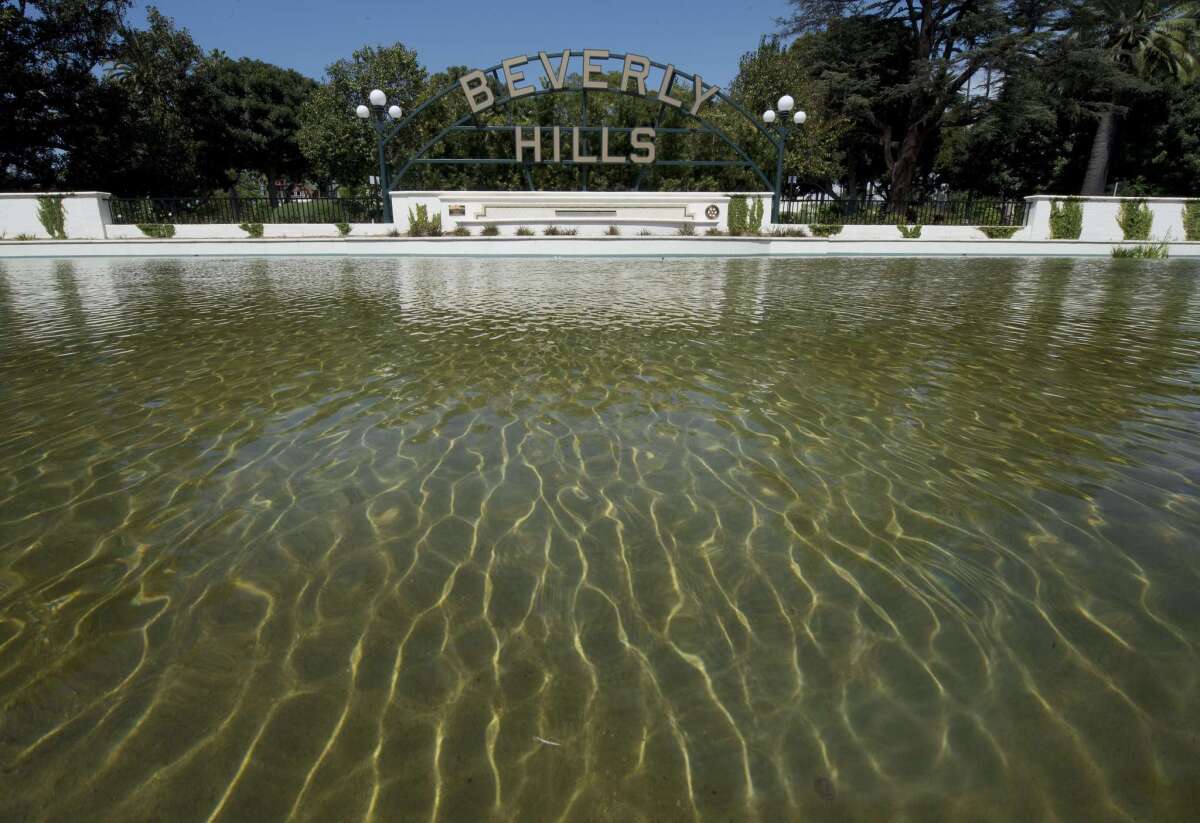Editorial: A court ruling could wash away incentives to conserve water

The rich, it turns out, use more water than the rest of us. The Times reported last week that residents of wealthy cities such as Beverly Hills use up to four times as much water, on average, than residents of neighboring Los Angeles, even during the current drought.
Those folks in the 90210 might well respond, “So what? We pay for it.” And of course they do, at higher rates per gallon as their usage increases. So is it their water and none of anyone else’s business, or everyone’s water and everyone’s business?
There is plenty of room in law, history and politics to support many different answers to those questions, and more to the point, to answer the even more basic question: What is water in California?
It’s a public resource, precious and finite, to be distributed equitably among residents while preserving enough for a sustainable environment and for future generations. It is a market commodity like oil or gold, to be traded publicly at prices set by inviolable laws of supply and demand. It is a human right, as basic as oxygen, undeniable to any person regardless of ability to pay and despite ownership claims asserted by landowners, agribusiness or municipalities. It is a government service like tree trimming or trash collection, provided at flat and predictable per-unit rates. It is sometimes one thing and sometimes another, like electricity, bought here from utilities traded on Wall Street and there from government, with regulated prices and rationing in times of shortage, or else free-floating rates set by a deregulated market.
If you accept the public resource model, wasting water is an offense against one’s neighbors and progeny, and should be subject to punishment in the form of fines. Such a worldview is engrafted in the state Constitution as Article X, section 2, with conservation for reasonable and beneficial use of the state’s water to be provided “in the interest of the people and for the public welfare.”
But in a market system, there is no waste and there are no fines — only choices and prices. If you’ve got the money and you’re willing to pay, you buy and you use as much as you like, as long as you’re willing to ignore the nasty glares from the less wealthy folks down the street. If you don’t have the money, well, tough; you go thirsty. Or, at least, you go without a lawn.
To broker some kind of workable truce among the various approaches, California’s municipal water agencies quite sensibly price their water in tiers, with all users paying a fairly low per-gallon rate in a bottom use bracket deemed sufficient for basic safety and comfort. Users who want more pay incrementally more per unit. Those who use the most pay the highest per-unit rates — higher, perhaps, than they would pay in a true market-based system. They can decide for themselves whether to view their top-tier cost as a fair price, a luxury tax, a reasonable inducement to conserve, righteous punishment for extravagant waste, or extortion.
The tier system layers on a little bit of the market, a dose of government, a touch of the general welfare. It’s imperfect and often unsatisfying, but in a pinch, it will do.
Several years ago, though, property owners in San Juan Capistrano, another wealthy city, rebelled against tiered pricing and argued that government must provide every gallon to every user at a rate that reflects only the cost of delivering it, without built-in incentives to conserve and without punishment for waste. They won their lawsuit in the trial court based on Proposition 218 — a taxpayer protection measure adopted in 1996, now in the Constitution as Article XIII D — and a ruling upholding or overturning that court’s decision is expected from the Court of Appeal in the coming week.
A screenwriter or a novelist couldn’t have timed it better for drama. With a worsening drought and an unprecedented statewide mandate from the governor to cut use around the state by 25% announced early this month, the court could invalidate tiered pricing, leaving Californians to their individual water-using consciences just when a little inducement is most needed.
Urban dwellers and farmers, northerners and southerners, rich neighborhoods with big houses and lush lawns and mid-level neighborhoods with apartment blocks and laundry rooms — all are already pointing at each other as water-wasters, infusing the drought with a layer of anger and suspicion that undermines much needed cooperation. Imagine how much worse it will become if water agencies may no longer provide an economic incentive to conserve.
Cities are doing their best to convince the Court of Appeal that the two glaringly incompatible sections of the state Constitution — the one that makes water a public resource and the one that may block government from incentivizing conservation — are actually complementary, and that any rate structure must necessarily reflect all of the costs of water resource management, not just the per-unit cost of delivery.
In truth, though, California has indulged in a fantasy, pretending that water can be simultaneously a market commodity, a government service, a human right and a communally owned resource. The resulting cognitive dissonance is more basic to our water woes than the often repeated fact that the state has promised farmers, residents and other consumers far more water than it can possibly deliver even in the wettest years.
When the snowpack is deep, the rains are falling and the reservoirs are full, Californians can shrug their shoulders over such academic quandaries and go about their business. The drought — and the lawsuit brought in San Juan Capistrano — will surely bring an end to such daydreaming.
Follow the Opinion section on Twitter @latimesopinion and Facebook
More to Read
A cure for the common opinion
Get thought-provoking perspectives with our weekly newsletter.
You may occasionally receive promotional content from the Los Angeles Times.










